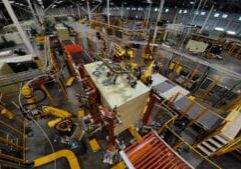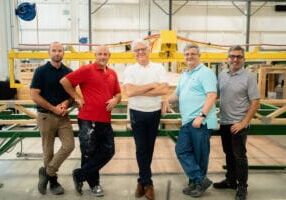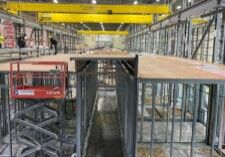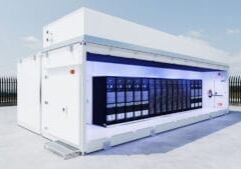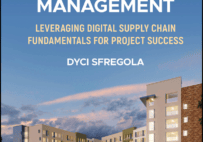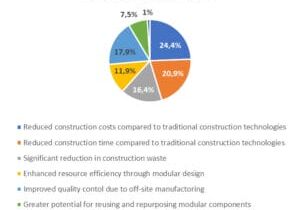Modular Design & Engineering — Risk Management Strategies & Insurance Considerations

B. Daniel Seltzer, CPCU, is a Senior Risk Advisor at RCM&D.
Thanks to the leadership of forward-thinking industry pioneers, modular construction has shifted from the margins to the mainstream. However, this shift in where and how construction occurs has introduced new — and often heightened — engineering and design risks. In today’s environment, these risks are compounded by interconnected digital platforms, proprietary designs, and delays caused by technology outages. If these risks are not proactively managed throughout the project lifecycle, the result can be significant financial harm to a company’s balance sheet.
There are no shortcuts: risk reduction and mitigation require Rigorous front-end planning and “future-proof” module design.
Key Engineering & Design Risk Mitigation Strategies
The following risks are, unfortunately, common in modular projects — and smart players deploy mitigation strategies early and often:









Known Consequences — real consequences of Engineering and Design failures. Below are examples of actual legal disputes where alleged poor design and engineering in modular construction led to costly outcomes:
- Graphic Builders LLC v. RCM Modular Inc. (MA) — $1.8 million verdict. Defective units included non-compliant electrical and plumbing systems, misaligned exteriors, and leaking windows
- Global Modular Inc. v. Kadena Pacific Inc. (CA) — $1.07 million awarded. Water damage resulted from inadequate weatherproofing and improper protection during delivery and installation
- 330 Grand LLC v. Modular Steel Systems Inc. (NY) — Over $250,000. Incomplete design and engineering services led to failure to meet contractual obligations
- Burcher v. Custom Builders Express LLC (VA) — $1.71 million wrongful death judgment. A home was improperly fastened to its foundation, violating code and resulting in a fatality
- Centrella et al. v. Ritz-Craft Corporation (VT) — $94,262. Code violations and poor design led to elevated carbon monoxide levels and water intrusion
Professional Liability (Errors & Omissions) Insurance — What You Should Know
Professional Liability (also known as E&O) is one policy to be crafted by an experienced broker. Unlike Workers’ Compensation (statutory insuring agreement), no two E&O policies are the same. Six critical considerations:
✔ Customization — E&O policies vary widely. Coverage must match your operations precisely
✔ Application as Warranty — your signed application becomes part of the policy. Material misstatements or omissions can void coverage
✔ Exclusions Matter — review limitations carefully to avoid coverage gaps
✔ Limits & Triggers — know how your limits apply and when
✔ Defined Terms — policy words in bold are defined; know what they mean
✔ Ask Questions — your broker should walk you through all relevant implications
The structure of every E&O policy:
✔ Declarations Page — declares the Named Insured, policy term, premium, retroactive date, policy limits, and — most importantly — the definition of “Professional Services.” If all services are not reflected here, coverage may be void. You end up with a contract to an argument
✔ Insuring Agreement — “Subject to all terms and conditions of this policy, the Company will pay on the Insured’s behalf damages and claim expenses in excess of the deductible arising out of a claim first made against the Insured during a policy year, and reported to the Company in writing during that policy year, by reason of an actual or alleged act or omission including personal injury, in the performance of professional services, where such acts or omissions occurred or are alleged to have occurred on or after the retroactive date”
✔ Conditions — outlines Claims Reporting, Allocation, Cancellation, Subrogation, and more
✔ Exclusions — typically 20+, such as “Insured vs. Insured” claims, contractual liability, or trade secret disputes. Between the review of your application and the issuance of the policy, insurance carriers frequently place exclusionary endorsements onto your policy to protect their shareholders, not your company
The “Ifs” of E&O — Are You Covered?
✔ If you hire design-build professionals: consider Owner’s Protective Professional Indemnity (OPPI). If you’re unfamiliar, ask your broker why
✔ If subcontractors are involved: will your E&O respond to allegations tied to their work — or are you exposed?
✔ If General and Professional Liability are bundled: is there a shared aggregate limit and is this truly sufficient?
✔ If your policy is Claims-Made: know your retroactive date. Are current limits ($1M?) sufficient for work dating back to that time, since and going forward?
✔ If Defense Costs are within the limit of liability: understand how this reduces available indemnity protection
✔ If your policy has a “Hammer Clause”: Be sure you fully understand the implications on your settlement authority
Final Thoughts
In 30+ years of guiding firms through engineering and design liability, I’ve seen the modular industry grow more complex — and more exposed. It’s impossible to distill everything into one article, but I hope you’ve found this snapshot valuable.
I welcome your questions and conversations. Reach out to discuss how we may help you protect your projects and your business.
Call me directly at (215) 913-5355 or write DSeltzer@RCMD.com RCM&D, trusted since 1885.
More from Modular Advantage
Resia: Breaking All the Rules
Resia Manufacturing, a division of U.S.-based Resia, is now offering prefabricated bathroom and kitchen components to industry partners. Its hybrid fabrication facility produces more precise bathroom and kitchen components (modules) faster and at lower cost than traditional construction. Here’s how Resia Manufacturing does it.
How LINQ Modular Innovates to Bring Modular To The Market in the UAE and Beyond
LINQ Modular, with an office and three manufacturing facilities in Dubai, is a modular firm based in United Arab Emirates. The company is on a mission: to break open the housing and construction markets in the Gulf Cooperation Council (GCC) area with modular.
ModMax: Redefining Modular Construction with Confidence and Precision
ModMax was born out of frustration—frustration with five persistent pain points in modular construction: Permitting bottlenecks. Production delays. Rigid designs. Disconnect between “the office” and the field. Lack of transparency and communication.
LifeArk: Disaster-Resilient Housing from Recycled Plastic and 100-year-old Technology
Wee compares LifeArk’s housing units to Yeti coolers, as they are built similarly. Each component takes 15 to 20 minutes to manufacture, has an R-value of 40, and includes molded slots and chases for wiring, plumbing, fire sprinklers, and other utilities.
Building the Future of Modular Edge Infrastructure
The edge data center market is expanding rapidly, driven by the surge in AI workloads, IoT adoption, and the need for localized compute power. In these environments, sustainability, scalability, and reliability are non-negotiable. Cooling is among the most complex challenges for operators—and one of the most decisive factors in long-term success.
Accelerating Light-Gauge Steel Construction: A Semi-Automated Digital Workflow for Off-Site Projects
For construction professionals, the message is clear. By adopting semi-automation and digitalization, companies can deliver projects faster, more accurately, and more profitably, while also building stronger collaboration across teams. The approach is not about replacing people with machines, but about empowering people with better tools and processes.
Why Modular Data Centers Are Gaining Momentum
Artificial intelligence, high-performance computing, and edge applications push the limits of traditional “stick-built” data centers. They take years build, often struggle with high density workloads, and aren’t optimized for deployments near end users. Modular data center platforms are purpose-built to address these challenges, offering flexibility and scalability to adapt to evolving technologies, while opening new opportunities for the modular construction industry.
Supply Chain Innovation in Action: 5 Habits Every Modular Leader Should Practice
By applying these principles to supply chain practices — collaborative planning, strategic procurement, scenario modeling, digital tools, and transparent forecasting — construction leaders can build value chains that are not just efficient and agile, but truly innovative.
Exploring the Role of Modular Integrated Construction (MiC) in Advancing Circular City Principles – A Survey of Stakeholder Perspectives
The survey findings highlight the significant potential of Modular integrated Construction (MiC) in advancing the development of circular cities. By reducing costs, accelerating construction timelines, and minimizing waste generation, MiC offers a promising approach to sustainable urban development.
The Use of MS POLYMER™-Based Sealants and Adhesives in Modular Building
These products combine flexibility and elastic recovery with excellent adhesion to different substrates and have already shown their usefulness in traditional construction. Now it’s time for them to be put to use in the modular construction industry.

